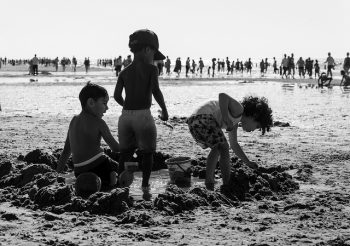The Dutch Heatwave of 2018 Posted by Karoly Molina on Jul 25, 2018 in Dutch Vocabulary, News
This summer has been quite bizar for the Netherlands. Temperatures have been unusually high surpassing 30 degrees Celcius or about 90 degrees Fahrenheit. Code oranje has been implemented around the country due to the hittegolf and measures are being taken to ensure the safety of everyone. Below is a list of some of these safety measures. But first, what is a hittegolf?
What is a hittegolf or a heatwave?
The warm days don’t necessarly mean we have a hittegolf. Certain temperatures must remain for a few days until it can be considered a heatwave. The video below explains in detail what a hittegolf is and the differences in temperatures in the country.
Bewustzijn or Awareness
News sources are advising people to stay indoors and remain hydrates as much as possible, especially during the hoogtepunt of warmth which is around 14:00 and 17:00. The elderly and people with chronic illnesses are the most at-risk and measures are being taken in hospitals, retirement homes and via the gemeenten to ensure everyone is safe. There are talks of this being the longest heatwave in history, beating the 1975 record of 18 days. The video below explains in more detail what the temperatures for the next week will be. Keep an ear out for words such as bloedheet (scorching), nationaal hitteplan (national heat plan), zorgen (take care of), prima strandweer (great beach weather),verfrissend (refreshing), zonkracht (sun power), onbeschermde (unprotected), schaduw (shade), tropennachten (tropical nights), and overheen (across).
Dierenpolitie
The dierenpolitie and the dierenbeschermingscentrums are also taking precautions and ensuring all animals are cared for. On social media, there are campaigns advising people to keep their dogs indoors and avoid strenuous activities such as fietsen or hardlopen with pets. The dierenpolitie has also been busy ensuring animals such as schapen, koeien and paarden have enough water and a shaded area to rest in. Unfortunately, there are many people in the Netherlands who still think its okay to leave their dogs in the car during the summer days. A recent hitte-experiment showed just how dangerous or gevaarlijk this can be.
Droogte
The warm days have also brought severe drought for the country. The neerslagtekort is at the level of the last big drought of 1976 with only 256mm. People are advised to refrain from starting fires in natural areas because the grass and plants are severely dry. The water pressure has also been reduced in many areas prompting residents to watch their water use, especially when watering plants or washing cars. This article from NOS gives more information about the drought and extreme weather of the last few days.
Because of the drought, the dijken have to be checked on a daily basis to ensure that there are no cracks that will let the water through. In the following video, you can see how these are inspected and what the dangers are.
How are you surviving the extreme summer weather in the Netherlands?

Build vocabulary, practice pronunciation, and more with Transparent Language Online. Available anytime, anywhere, on any device.




